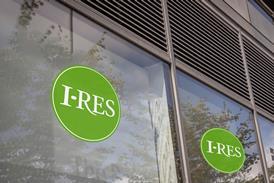Hotels are recovering quickly from the impact of Covid-19 with occupancy rates proving promising for the remainder of 2022, as events and travel resume and approach pre-pandemic levels.

The outlook for the year looks strong. Though hotel performance had not quite been predicted to return to pre-pandemic levels by the fourth quarter of this year, it has exceeded these predictions in London and there are encouraging signs for hoteliers when looking ahead to 2023.
After two years of missed summer holidays and one of the most volatile trading periods known to a generation, demand for hotels is returning in full force. The resumption of international travel and in-person events and the pent-up demand that has mounted is revealing a strong recovery for the hotel sector. Amadeus’ data shows global hotel occupancy for April and May of this year exceeded pre-pandemic levels with significant potential to grow. And CBRE Hotels Research has raised its 2022 forecast for average daily rates, occupancy and revenue per available room (RevPAR) to reflect the stronger-than-expected fundamental performance for Q4.
This is especially true for London, where PwC Hotels Forecast 2022-23, predicted RevPAR in real terms will reach between 101% to 105% of pre-pandemic levels by Q4 of 2023. This prediction drops slightly for the regions though, sitting at around 85% to 98% of pre-pandemic levels, as GDP is forecast to fall close to zero in 2023 and is a key driver in these areas for UK domestic corporate and leisure demand.
We’re seeing the spectre of recession, inflationary pressures and high energy costs threatening to create differing recovery rates across the UK and temper demand growth - illustrating the impact of economic and external events on the hotel industry. However, with proper budgeting and forecasting, it is feasible to mitigate and manage energy costs by replacing older energy inefficient assets. While operationally, as with many industries, these are challenging times for hotels, the potential for growth in the 2023 market looms.
Even with the recession the UK is facing currently, this is likely to lead to an influx of domestic holidays and strong domestic leisure trends. Tourism and business are both recovering after the pandemic, driven predominantly by suppressed travel demand that has now opened up so that London is vibrant with tourism again. Even as the value of the pound dwindles, this attracts tourists from overseas, allowing for cheaper travel.
Falling sterling also makes the UK attractive for investment to those outside of the UK and so more demand can be expected from overseas buyers as political positions settle and stabilise. And although Covid-19 taught us that anything can be around the corner, with little visibility beyond 6 to 8 weeks, there is no downturn seen to be coming. There is an underlying belief among investors that the UK is a ‘safe’ place to park cash, which will work in our favour. This paired with the historical performance of the sector proving its resilience curates a convincing argument for investors.
Ultimately, for the long term most would be wise to be involved in this sector.
Tom Jansons is development manager at Jansons Property
































No comments yet